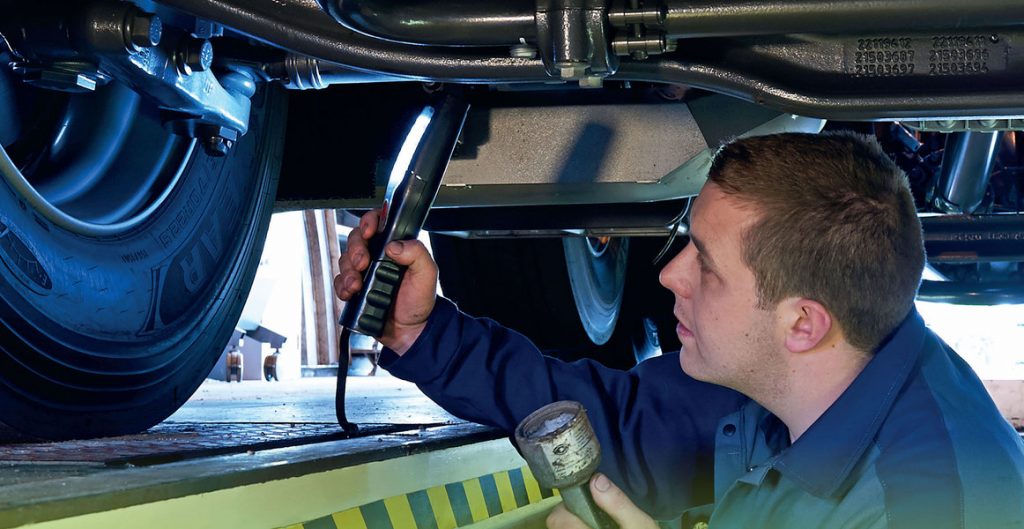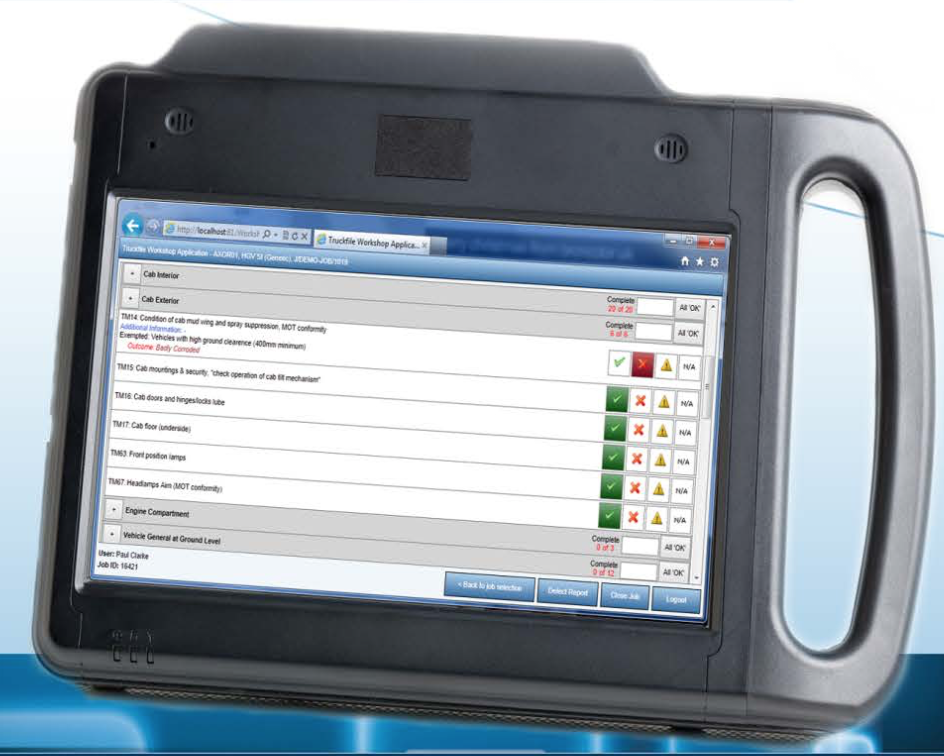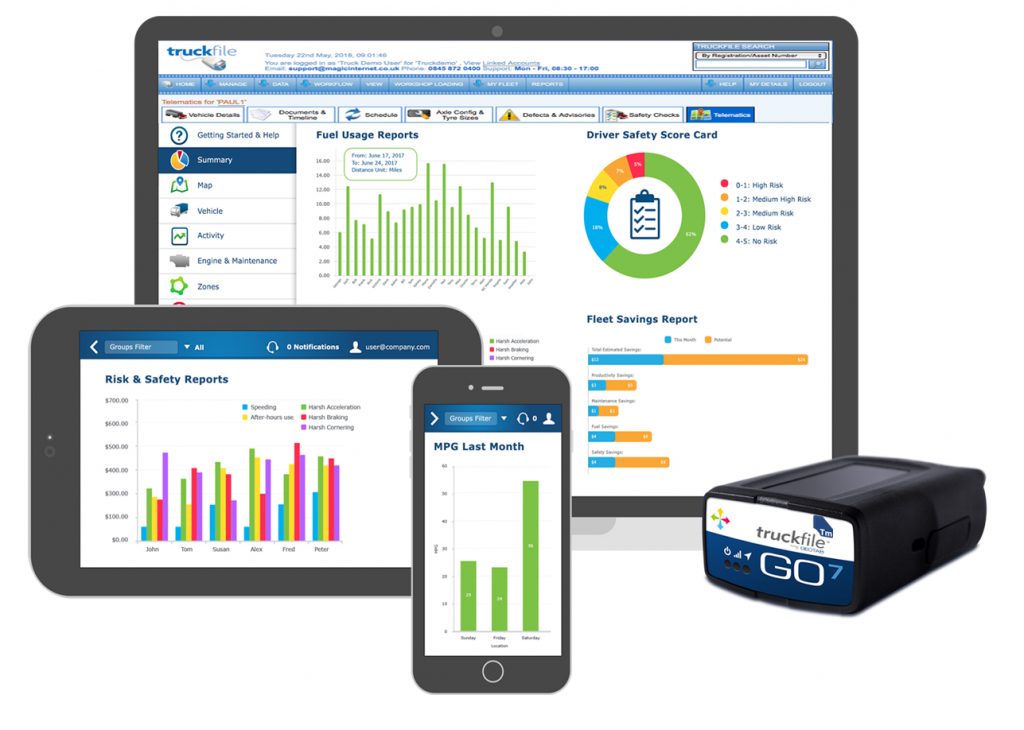Thought telematics was just about vehicle tracking? CVW’s Consulting Editor, Sharon Clancy, explains how it’s also playing a growing role in vehicle health, maintenance and compliance.
Safety inspections are designed to ensure in-service reliability and roadworthiness, and reduce the risk
of breakdowns. However, they can also result in more downtime than strictly necessary from a safety viewpoint and premature replacement of parts.
Hence the growing interest in telematics-style vehicle health monitoring (also called condition monitoring) and predictive maintenance systems, to help reduce downtime without compromising on in-service reliability. Real-time health management gives workshops greater confidence that a part will last until the next scheduled inspection so there is no need to replace it early – or indeed, result in vehicle safety being compromised.
Many operators, for example, prefer to replace brake pads or linings early rather than risk brake performance being compromised. However, with brake wear indicators installed, workshops have a much clearer view of how many more miles the vehicle will travel on the current pads and can make an educated decision, based on the miles usually travelled by that vehicle between routine maintenance visits.

Vehicle health monitoring
Modern trucks bristle with all sorts of technology. More accurate sensors, CANbus electronics, on-board telematics systems, fast mobile data communication and cloud computing are making vehicle health management easier for many fleets.
On-board diagnostics systems, legally required as part of emissions control systems, have made health condition reporting easier. Real-time availability of key data is helping reduce costs, both in terms of parts and workshop labour hours. Reliability and safety is enhanced and vehicles are kept in optimum condition, improving key performance parameters such as fuel economy.
Monitoring vehicle health in near realtime can also help operators be proactive when something unusual is going on. Tracking engine temperatures and pressures in real-time for example, could indicate a fault with the fuel injection system or something amiss with the emissions control system – just knowing the engine temperature is outside normal parameters is an early indication of a problem.
The on-board diagnostic packages that are now installed on many newer truck models save time when the vehicle is in for service – the workshop knows what faults have developed on the vehicle before it has arrived. Any parts required can be ready and waiting and the right technician with the right skill assigned to it, helping get the vehicle back on the road as soon as possible.

On-board data capture
CANbus data can include a wealth of health detail including active fault codes, temperature, levels, pressures and dashboard warning lamps to name just a few. The FMS standard, adopted by the main European truck makers for harmonising on-board data capture and transmission, uses the SAE J1939 standard, the global CANbus standard for trucks.
It ensures a common language for vehicle communications and system fault codes. The codes do not change, creating continuity from one model to the next and it also provides operational data that is often not available through an OBDm port. Because of this, J1939 has been instrumental in encouraging telematics take-up in Europe because it provides operators with common data, regardless of the truck make, and because it allows third-party telematics providers to capture CANbus data needed for operational and vehicle health management.
Vehicles can be fitted with a dedicated FMS port which communicates with the telematics box, although not all OEMs fit an FMS port as standard, so it can be an additional cost. An alternative solution is a wireless data capture device that clips to the CANbus. Much of the vehicle health data comes from the truck‘s OBD, which records any faults that occur as diagnostic trouble codes (DTCs).
DTCs can provide early warning of any minor faults before they develop into major ones. Increasingly, DTCs are being remotely downloaded to the workshop via the vehicle telematics system.
The compliance loop
Defect reporting and rectification is a key tool in the DVSA compliance monitoring. Electronic apps save time and provide managers with confirmation that the driver has completed the legally required safety checks before the vehicle has left the depot. Instead of a paper list, which can get lost and for which transport managers may have to wait days before receiving, the driver uses a mobile app.
Apps typically include the 21-point DVSA daily check list for HGV trucks and can include drop-down menus listing common defects. Some require drivers to tap the screen at each check point, while others allow drivers to record the check has been done at completion of the walkround.
Options include the addition of a GPS location fix and being able to attach photographs – useful for managers determining whether a defect is safety critical.
Once completed, the file with the safety check file is sent over the mobile network to the office. Minor, advisory and safety critical defects are flagged immediately, before the vehicle is on the road.
Transport managers or fleet engineers can then decide if any defect is severe enough to take the vehicle off the road. Truckfile’s system, for example, utilises weather resistant (QR) bar codes which are placed on the vehicle at key inspection points.
Each tag contains information about the driver, vehicle, inspection point and the components to be checked. If defects or advisories are found, they can be selected from a predefined list within the system, making it simple for a driver to report a problem.
The Truckfile vehicle record contains all previous checks, while up to 15 checks can be held on the app on the mobile device. Each check is then transmitted to Truckfile’s secure database, accessible by any authorised person.

Online compliance records
Maximum benefit is gained, of course, if all service activities are done digitally. Drivers use an app to report a defect, which is sent electronically and stored; the workshop uses an app to pull down any defect reports on a vehicle, record maintenance work done and post the report online where it is available to anyone with authorisation to view it (including DVSA inspectors).
Central record keeping is proving particularly attractive for operators who contract out maintenance, but who nonetheless remain legally responsible for the safe operation and maintenance of their fleet – a point recognised by the vehicle manufacturers offering repair and maintenance contracts.
Centralised service records are also useful in the event of a breakdown – roadside technicians can see when the next inspection is due and when any temporary repairs were made.










